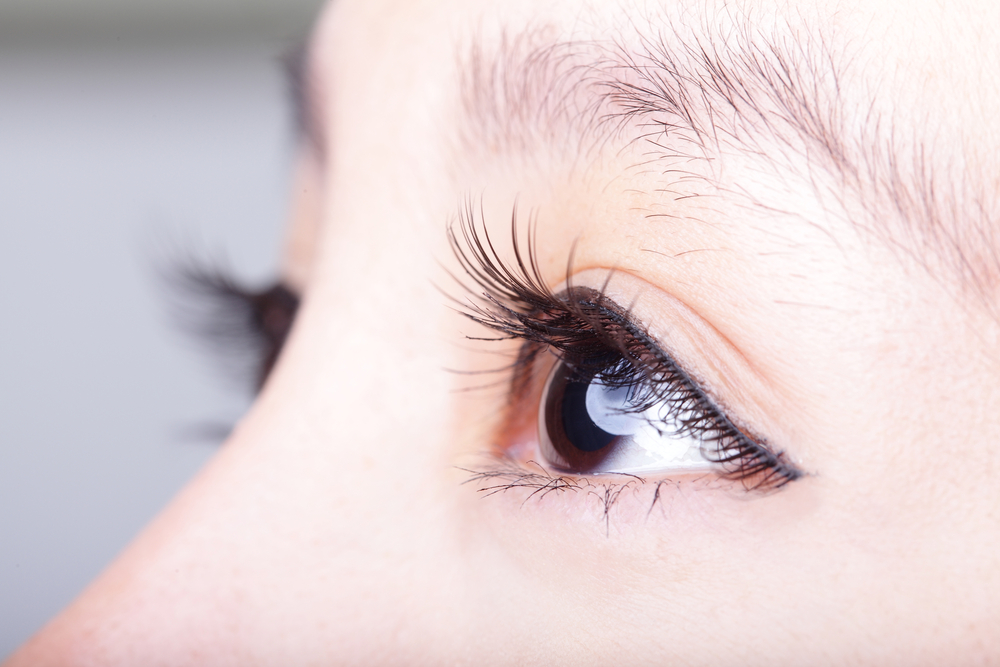Having reconstructive breast surgery with or following mastectomy can be very beneficial — for some women. But these days, more and more breast cancer survivors are choosing to “go flat.”
Until recently, the prevailing opinion among medical professionals involved in the treatment of breast cancer was that most women undergoing mastectomy benefited from having reconstructive breast surgery either immediately following the mastectomy (immediate reconstruction) or at a later day (delayed reconstruction).
We interviewed numerous experts for this article, and all stressed the point that for many — but not all — women, this is still the case. Yet in recent years, more and more breast cancer survivors are chosing to avoid reconstruction surgery altogether. This option has come to be known as “going flat.”
Why Go Flat?
The reasons women decide against having reconstructive surgery are as different and varied as the women themselves. For some, going flat after mastectomy isn’t a matter of choice but rather a medical necessity. “There are certain medical conditions which historically might tip the scales towards ‘going flat’ and not having breast reconstruction, says Boston plastic surgeon Sam Lin. “Those conditions include significant heart disease, medication usage, smoking, and systemic medical conditions.”
Another medical reason that prevents some women from undergoing reconstructive surgery following mastectomy is the severity of the cancer they’re fighting. “If someone has Stage IV breast cancer with metastatic disease spreading to other parts of the body, all of the body’s resources need to be used for survival,” explains Constance Chen, a board-certified plastic surgeon based in New York City.
And according to Chen, many women don’t undergo reconstruction for a more practical reason: it isn’t offered. “Especially in more remote areas, it may be difficult to find a plastic surgeon who can perform breast reconstruction,” she says.
But for some women it’s a matter of choice; after weighing all the options they come to the conclusion that they want to go flat. Here are just some of the many reasons a woman might have for going flat:
- Doesn’t want to undergo additional surgery
- Doesn’t want to accept any level of risk associated with reconstruction, even if it’s low
- Doesn’t want to wear a prosthesis
- Needs to return to daily activities as quickly as possible
- Is concerned about the idea of losing muscle strength as a result of undergoing autologous (or flap) reconstruction. (Note: there are procedures that avoid cutting muscle at the flap donor site.)
- Is concerned about the cost and/or lacks insurance coverage
- Simply doesn’t feel she needs reconstructive surgery to feel beautiful
And for some, after the emotional and physical ordeal of going through breast cancer, the idea of undergoing a non-medically necessary surgery just isn’t attractive at all. Such was the case with Joan Jaeger, a Northfield, Ill. resident who was diagnosed with triple negative breast cancer in December of 2012.
Jaeger spent all of 2013 through May of 2014 in active treatment to rid herself of the disease, including many months of intravenous chemotherapy, a mastectomy, more than 30 sessions of radiation followed by six months of oral chemotherapy.
Initially, forgoing reconstruction was a necessity; Jaeger’s medical team didn’t even allow her to consider post-mastectomy breast reconstruction until she was finished with radiation. But after a few months, it became a choice.
“Those several months of being flat made me appreciate my body in ways I didn’t appreciate before cancer,” Jaeger says. “After much thought, I decided to stay flat so as not to put my body through any unnecessary surgery. There is no medical necessity and in fact I learned about all the potential complications that come with reconstruction. I decided to honor my healthy body and have come to truly appreciate that being feminine does not depend on a cup size. I have no intention of reconstructing.”
I decided to honor my healthy body and have come to truly appreciate that being feminine does not depend on a cup size.
Jaegar also found it strange when a medical professional commented that reconstructing would make her feel whole. “Sorry, but breast cancer and the mastectomy left a mark. No amount of added plastics or re-positioned belly fat will make up for that,” she explains. And many breast cancer survivors feel the same.
But not all. In fact, some breast cancer survivors experience both going flat and then later decide to have reconstructive surgery, and see the pros and cons of both. Take Tracey Cheetham, for example, a writer and breast cancer survivor from Roynston, a village in South Yorkshire, England.
Like Jaeger, Cheetham’s journey was a long one, but it took a decidedly different course. Following her first mastectomy, she “felt like a mutant,” as she puts it, because she was left with one large breast and no breast on the other side. “Whilst I used a prosthesis, I hated the physical form I’d been left with and would have preferred to have had both breasts removed at the same time, even though one was ‘healthy,’” she says. “I opted for a prophylactic mastectomy of my right breast a year after my first mastectomy, due to my personal risk of recurrence.”
Cheetham then went flat for several months, during which she says she enjoyed not wearing bras and just slipping a vest top on under her clothes. She found it liberating to not be concerned about breasts. But unlike Jaegar, Cheetham always knew she would have reconstructive surgery. A few months after her second mastectomy she underwent a lattisimus dorsi reconstruction of both breasts, a highly invasive option that involved a very difficult recovery.
She has mixed feelings about the procedure itself. “I’m delighted with the result, but regret the type of reconstruction, which was the only one (strongly) recommended to me. It was a huge operation and I now feel that I’m a breast cancer patient ‘front and back’ due to the scarring… Cosmetically, the results are excellent, apart from the scars, which are obvious, but unavoidable — however, when I’m clothed no one would know.”
Cosmetically, the results are excellent, apart from the scars, which are obvious, but unavoidable — however, when I’m clothed no one would know.
In hindsight, Cheetham says, she would have had a less significant surgery — maybe just breast implants, rather than the lattisimus dorsi reconstruction procedure. But she does not regret the decision to have reconstructive surgery. Nine years after her reconstruction, Cheetham would definitely recommend it as “part of the recovery process,” as she puts it. “’Getting back to normal’ is a hugely significant aim when going through cancer treatment and reconstruction helps with that,” she says.
Katelyn Carey, RN, SDS, author of Beauty After Breast Cancer, echoes this sentiment, including the fact that it takes time. “Breast cancer is a body-altering disease, and we are a body-conscious culture. Recovery from breast cancer will take time, and returning to a ‘new normal’ is a process,” she says.
But Carey also stresses the vast array of different experiences women have with this process. “I know one woman (with a beautiful reconstruction) who in seven years has still not let her partner see her naked (the lights are always off). I know another who has not even completed her reconstruction, and is already back to professional modeling. She seems to have no confidence issues at all, and is quite comfortable being topless in front of others.”
Important Considerations
Women with breast cancer typically have many difficult decisions to make, and the prospect of going flat versus having breast reconstruction is no exception. There is no perfect solution, and therefore it is very important that women acquire as much information as possible before making a decision. Studies from the American Society of Plastic Surgeons have found that more than 70% of women are not fully informed about their reconstructive options prior to undergoing mastectomy.
Most surgeons we spoke with agreed that for most women interested in having their breasts reconstructed (as opposed to going flat), it should be possible to achieve positive results whether they undergo reconstruction immediately or at a later date. However, some of these surgeons do prefer to perform the procedure immediately when possible.
More than 70% of women are not fully informed about their reconstructive options prior to undergoing mastectomy.
“At NYBG plastic surgery, most patients receive immediate reconstruction,” says Kevin H. Small, M.D., Director of Plastic Surgery at New York Bariatric Group in Roslyn Heights, NY. “Immediate breast reconstruction is done, or at least started, at the same time as the mastectomy,” he continues. “The benefit of this approach is that the breast skin is often preserved, which can produce better-looking results, and provide an initial shape of the breast.” (Some women will require several stages to restore natural-looking breasts after a mastectomy.)
Delaying reconstruction can make the procedure trickier for the surgical team. “Foregoing breast reconstruction immediately, followed by deciding to undergo reconstruction later in life presents technical challenges and is more difficult to obtain an aesthetically pleasing result,” says Jonathan Landon, MD, a plastic surgeon at Good Samaritan Hospital Medical Center and Chief of Plastic & Reconstructive Surgery at South Shore Plastic & Reconstructive Surgery in New York.
For example, Landon says, the skin of the chest wall will have contracted, necessitating the use of a tissue expander to stretch the skin permitting placement of a breast implant. And the normal anatomic landmarks of the breast, such as the inframammary fold, will have disappeared and “scarred in.”
Dr. Michael Rose of The Institute of Advanced Reconstruction in Shrewsbury, New Jersey, also agrees that delaying reconstruction can pose certain challenges. “Staying ‘flat’ is certainly the simpler option overall with regards to initial surgery and recovery time,” he says, but, “if the patient changes their mind it is much more difficult later on and it may limit their options available to them. This is why informed consent and education is so important when making this decision in the early phases of planning.”
But this does not necessarily mean that delaying reconstruction will lead to a negative outcome. In fact, some surgeons say that delaying reconstruction to a later date shouldn’t affect the aesthetic results.
“It’s not necessarily more cosmetically pleasing if a patient undergoes reconstruction earlier,” says Dr. Joshua Zuckerman, MD, FACS. “A good reconstructive surgeon can achieve just as good a cosmetic result immediately after the mastectomy or later on.” Zuckerman is generally in favor of consolidating recovery periods, because the combined mastectomy plus reconstruction recovery period is not necessarily longer or more severe than having mastectomy alone. But he says that it depends on the reconstruction being performed.
And this brings us to the most important point of all.
Every Patient is Different
If there’s one thing breast cancer experts and surgeons agree upon it’s the fact that each breast cancer patient’s experience is unique. Each patient must weigh her own medical situation and personal/emotional factors when making crucial decisions such as whether to combine mastectomy with breast reconstruction, delay the breast reconstruction procedure, choose to have breast implants placed, or decide to “go flat.”
“Breast reconstruction is a very individual decision and involves not only a woman’s feeling of wellbeing, but her concern about additional scars, further surgeries, other health issues, etc.” says Anne Wallace, MD, a surgical oncologist and plastic surgeon who serves as Director of the Comprehensive Breast Health Center at Moores Cancer Center at UC San Diego Health.
According to Wallace and numerous other breast cancer treatment experts we interviewed, a woman’s decision to stay flat is very personal and usually extremely well thought out, so any person pressuring a patient to undergo reconstruction should nicely be told by the patient that she has considered all her options and this is her personal choice.









